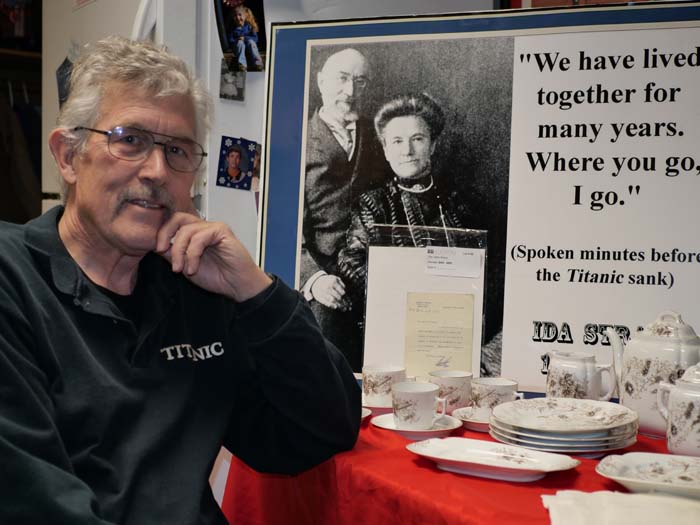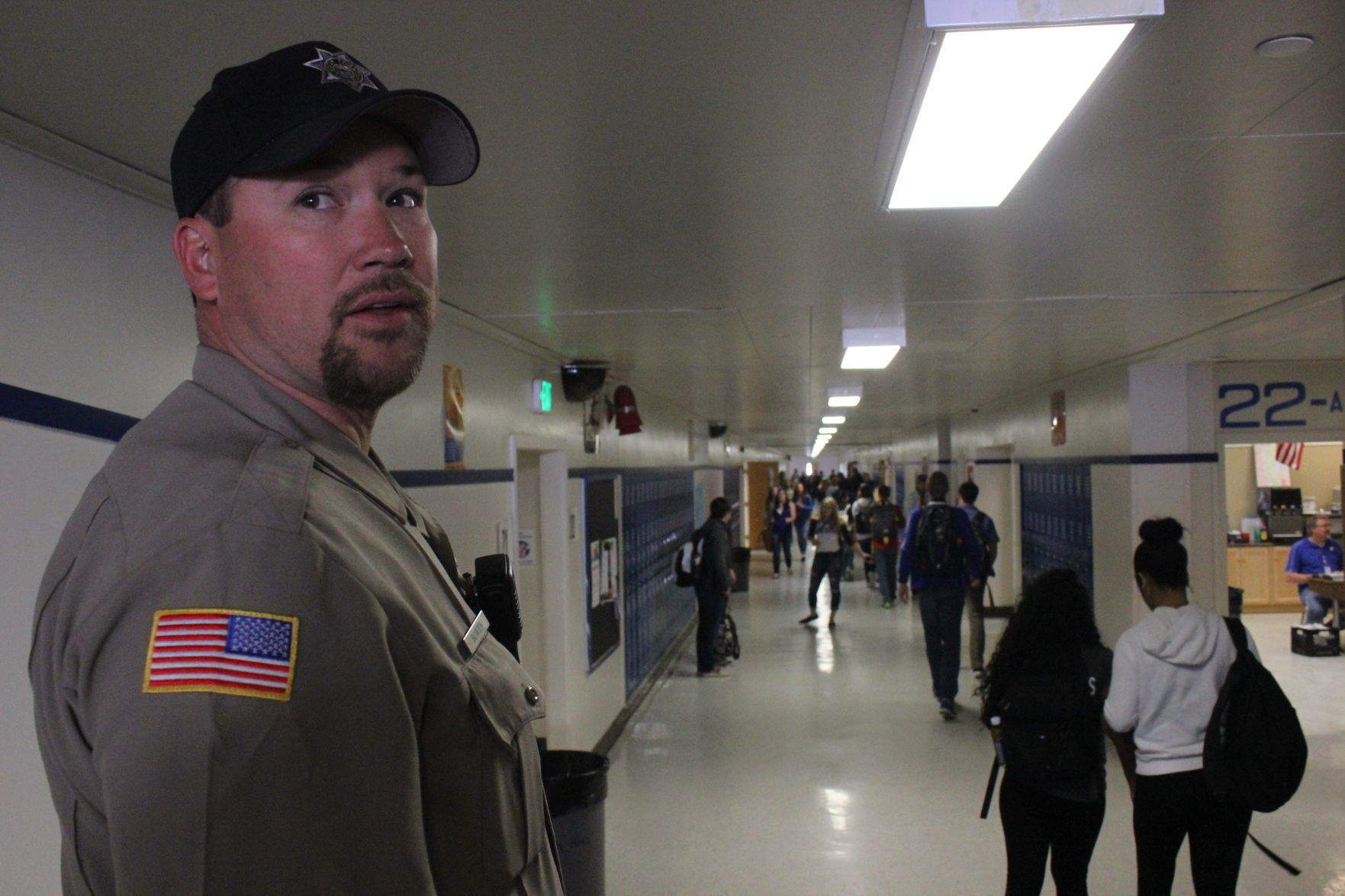Preserving history: John Lamoreau’s collection of Titanic artifacts is featured in a new book ‘Titanic Collections’
Published 7:00 am Wednesday, January 31, 2024

- John Lamoreau of La Grande, pictured above with a tea set that once belonged to Titanic passengers Isidor and Ida Straus, has been collecting Titanic artifacts since the 1990s. His collection is one of six spotlighted in a two volume set of books, "Titanic Collections."
LA GRANDE — A visit with John Lamoreau just might lead to an encounter with ghosts.
Trending
The long-dead people seemed to come alive, anyway, once Lamoreau started pointing out their photographs and talking about them.
Lamoreau knew those ghosts well, told their stories with deep affection.
One spirit of many in the room was Francis Millet, architect, painter, writer and good friend of Mark Twain. Lamoreau told how Twain, who was best man at Millet’s 1879 wedding, had a way of calling people he liked and respected, people with good qualities, “millets.”
Trending
Lamoreau also introduced William Harbeck, movie director who filmed the 1911 Pendleton Round-Up, the rodeo that featured appearances by African American cowboy George Fletcher, Native American cowboy Jackson Sundown, and Union County cowboy John Spain.
Then there were Isidor and Ida Straus, an elderly couple whose love for each other was strong enough to be memorialized in an epic, Oscar-winning movie.
“Titanic,” Lamoreau asserted, changed the facts a little.
Ida did speak the immortal words, “Where you go, I go,” but not in the couple’s cabin as in the movie. They were up on deck. Still, it’s true: she gave up her place in a lifeboat to stay behind with her husband.
The Strauses, Millett, Harbeck and others who came to such vivid life in Lamoreau’s telling were among the 1,500 people who perished when the “practically unsinkable” Titanic struck an iceberg and sank on April 15, 1912.
Lamoreau, a former Union County commissioner and retired La Grande High School social studies teacher, has been studying the disaster and gathering artifacts connected to it for about 25 years.
“It’s my New York Times crossword puzzle. I love following the clues and finding the answers,” he said.
He’s amassed photos, letters, postcards, diaries and legal documents. Physical artifacts in his collection include a tea set from the Straus estate, a bronze plaque that once hung in honor of the memory of Titanic Ship Surgeon William O’Loughlin, woodwork from Titanic’s near-identical sister ship, Olympic, and much more.
Now, Lamoreau’s collection is spotlighted with those of five other leading Titanic experts in a two-volume set of books called “Titanic Collections,” published by The History Press. The first volume, subtitled “Fragments of History: The Ship,” is out now, and the second is due to appear soon.
Many Titanic collectors hide their prizes away so the public never gets to see them. The men involved with the book project feel that’s unjust; they’ve created the lavishly illustrated books so a wide audience gets to see artifacts relating to Titanic’s history.
“Together, we could fill a museum, quite literally,” Lamoreau said.
A leader of the project is George Behe, president of the Titanic Book Club and author of numerous books about the ship and its history.
Another prominent Titanic expert involved is Don Lynch, who was an advisor on James Cameron’s 1997 “Titanic” film.
Mike Beatty, Trevor Powell and Kalman Tanito — all prestigious names in the world of Titanic collecting — round out the list of contributors.
Lamoreau said he felt a little intimidated when he was invited aboard.
“Say you like to play basketball, and one day LeBron James and Michael Jordan ask if you want to have a game. That’s how I felt when they asked me to be a part of the project. It was overwhelming,” he said.
Lamoreau, 73, said he became fascinated with the Titanic after seeing the 1958 movie “A Night To Remember,” based on Walter Lord’s book by the same name. In the 1990s, he began his search for artifacts.
He vividly remembers his first acquisition.
“I stumbled across a letter written by Francis Millet, an actual handwritten letter,” Lamoreau said. “There’s great historical context in that. The more I researched him the more I realized he was one of the world’s most famous people when he died, but people know so little about him today.”
Lamoreau began to form relationships with other Titanic researchers. Eventually, he became friends with Behe. The two have compared notes many times over the years.
“We’ve had a wonderful relationship. Anytime I find an artifact, he’s the first person I contact,” Lamoreau said.
Lamoreau said that when he thinks about the people aboard the Titanic that night, he ponders fate and the myriad unanswerable questions that come with it.
“How can it be that you get on the ship that supposedly can’t sink, yet it does?How is it that the richest man in the world dies but a third class passenger survives?” he said.
If ghosts truly existed, the ones from the Titanic likely would be asking the same questions.
“Titanic Collections,” published in England, is not yet on sale in the United States. Copies of Volume 1 are available at www.thehistorypress.co.uk/.
It is also available at Amazon.co.uk. Lamoreau said he plans to plans to purchase a number of copies and make them available locally.









